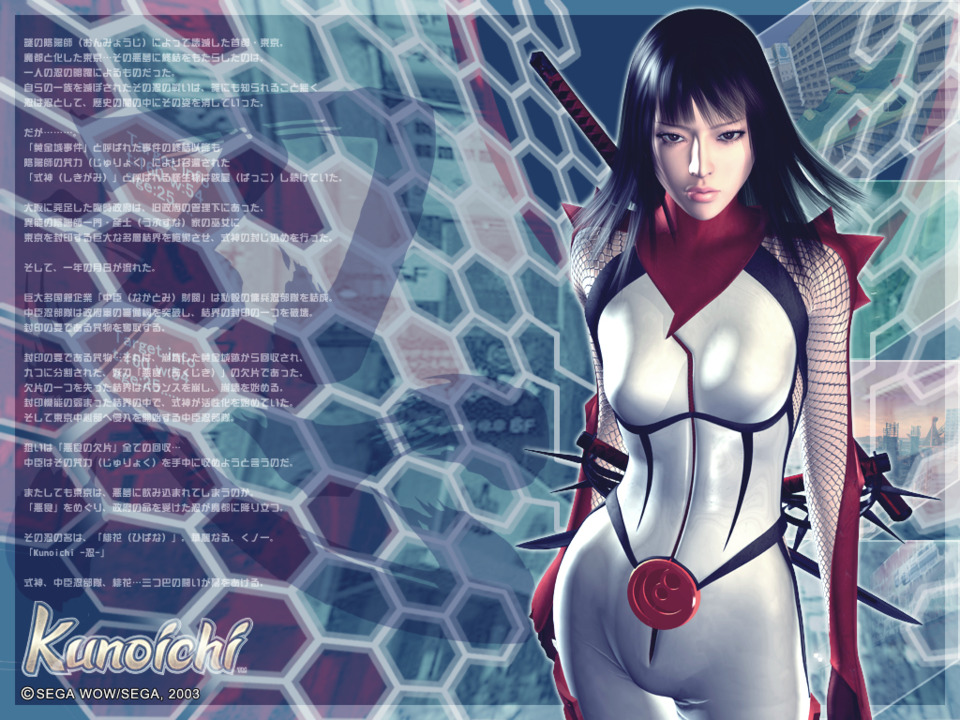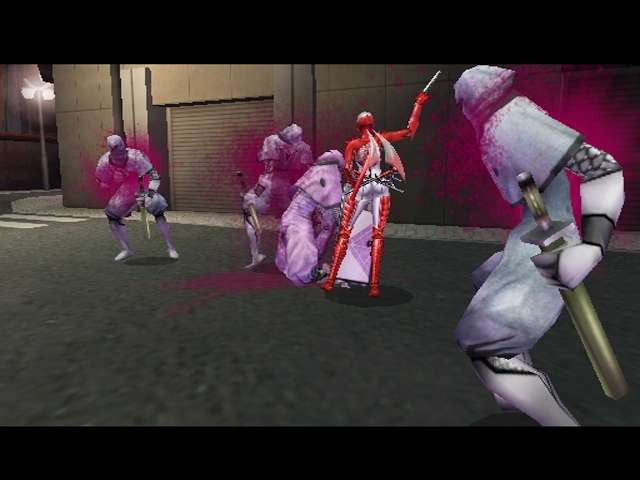The Top Shelf: The Second Round 003: Nightshade
By Mento 0 Comments
Welcome to The Top Shelf, a weekly feature wherein I sort through my extensive PS2 collection for the diamonds in the rough. My goal here is to narrow down a library of 185 games to a svelte 44: the number of spaces on my bookshelf set aside for my PS2 collection. That means a whole lot of vetting and a whole lot of science that needs to be done - and here in the second round, that means narrowing our laser focus to one game per week (at least). Be sure to check out the Case File Repository for more details and a full list of games/links!

For the time being, I've been checking through my list of "maybes" that will comprise the second round of The Top Shelf, picking out random games in order to create a somewhat eclectic assortment from week to week. Nightshade seemed like a change of pace from the measured and deliberate Headhunter, which I suppose is ironic because despite being about ninjas Nightshade doesn't have much of a relationship with stealth or subtlety whatsoever. Part of a wave of games that attempted to bring back the hard-as-balls ninja games from the 8-bit generation, in Nightshade's particular case that being the Arcade and Master System game Shinobi which I first played for the Atari ST in a so-so conversion, it's a game all about chucking waves of enemies at you and you having to move and act quickly to avoid getting overwhelmed.
Devil May Cry really set the precedent for all these third-person action games that largely consist of running into a nondescript room, eliminating all the monsters that suddenly spawn before the big energy wall blocking the way forward will finally vanish, running into the next unfurnished square room and repeating the process until you eventually face a gigantic boss with an intimidating health bar. Personally, I've never really cared for the "character action" genre, which reduces the amount of exploration and puzzle-solving inherent to an edge case like God of War in favor of a linear series of group battles against nigh-identical enemies. Nightshade starts promisingly with a Bayonetta-esque fight against cyborg ninjas on top a stealth bomber, where you occasionally have to pause to kick a missile back at the plane that fired it, but after that becomes an endless slog of slashing apart ugly "hellspawn" bugs through the guts of an empty and lifeless Tokyo. You remember when Giant Bomb East played Bujingai for two hours and it never seemed to change? Very much like that. These high-speed martial arts games took the wrong lessons from Devil May Cry, I suspect, which in its defense at least broke up its constant fights against spooky marionettes with some Resident Evil style lever and key puzzles.

Nightshade's story is fairly threadbare: the introductory movie begins by recounting the events of the Shinobi PS2 game, of which Nightshade is an indirect sequel. Franchise protagonist Joe Musashi was tasked with finding and destroying the soul-stealing "Akujiki" blade, which he successfully did by shattering it into pieces. However, various bad elements have been searching for these pieces hoping to reforge the blade, while also ensuring that the dread pirate Cervantes and the demon lord Jacquio and anyone else in the market for cursed blades are kept in the dark. (I just made that last part up; can't help but notice that cursed soul blades seem to be a recurring theme for that console generation.) The prologue then becomes a trailer of sorts for the core game, running through a montage of cutscene clips and boss fight teases before I decided to skip it to save myself from spoilers. If there's much of a story, it comes in the few minutes before and after each of the game's stages where a radio voice informs Hibana, the game's kunoichi heroine, of her next mission: stop the Nakatomi Ninjas from breaking the seal and letting all the hellspawn invade the city, and then when that inevitably happens, kill all the hellspawn and recover the Akujiki blade pieces. As if sensing that people don't come to these arcade-like action games for the plot, the game just kind of breezes past it.
The heart of Nightshade is definitely in the combat mechanics. Hibana has all the skills and gear you'd expect of a ninja: she has shuriken for distant targets, and while they're unable to kill they will temporarily stun enemies and cause them to drop out of the sky if they're aerial, making them easier to finish off; a katana long sword that does most of the heavy duty work; a pair of short swords that do less damage but increase the combo meter faster and have been made curiously difficult to use by the game's obtuse controls; a kick that works best to guard-break enemies, but is surprisingly effective in a number of other cases; ninjutsu which tend to work as either crowd-clearers or temporarily invincibility buffs, but are extremely finite; and Hibana's own "Tate" powers. Earning Tate is a significant aspect of the minute-to-minute gameplay, as it comes in incredibly useful against bosses and is earned from performing combos. Specifically, from killing every enemy in the vicinity in quick succession, which causes Hibana to stick a cool pose with a dry quip as all the enemies explode around her. Subsequently, Tate is the most valuable resource in the game, and I took to saying "I'm all about the Donovans" more than once while completing the combos needed to earn it.

I really didn't enjoy the game's controls as much, which seemed to invert both the horizontal and vertical cameras and required players to pull the analog stick down to alternate from their long sword and kick (which take up a face button each) to the short swords and more devastating "float kick", which sends enemies flying upwards for a quick "Izuna Drop" style follow-up. Both of these attacks have their benefits, but both are short-range attacks that require holding the movement stick away from enemies, so you can imagine the accuracy issues that might arise. It's also apparently a rule that ninjas have floaty jumps, which doesn't make maneuvering around tight and precarious areas all that enjoyable, though Hibana will at least stick to walls and run along them (just not up or down them) for an added safety net.
I wanted to see more of the story and perhaps fight a ninja duel boss or two, but the sheer monotony of the standard gameplay made me realize that there's no way in Yomi-no-kuni I'd ever consider this game one of my favorites even if I had the stomach to even finish it at all, so I decided it would be best to end the playthrough early and give it the summary tabi up the keister. Sorry, Nightshade. You are stylish and speedy, but there's a reason that particular sub-genre eventually died out. (Of course, I say that, but I'll be getting around to the somewhat similar Metal Gear Rising in due course.)
Result: Eliminated.
